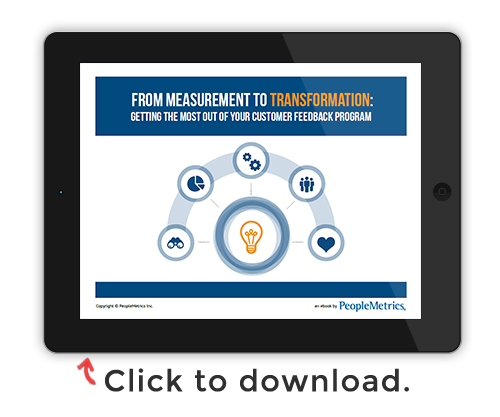Watch experience measurement experts discuss this topic on PeopleMetrics LIVE!
“If there is one secret to success, it lies in the ability to get the other person’s point of view and see things from that person’s angle as well as your own.”
- Henry Ford
Even though much has changed since Henry Ford's heyday, like consumers, many employees now seek an emotional connection and a great experience with their employer.
Moreover, today’s employees value career progression and especially a safe working environment as much as they value their paychecks.
Still, despite these shifts and the current changes in where employees work due to COVID-19, Ford's focus on communication is still relevant eight decades later.
PeopleMetrics has found that internal communication is the key component in creating a superior employee experience. In turn, employee engagement surveys and Voice of Employee are great tools for understanding what your employees really want.
Image Credit: Glasses by Matheus Almeida, CC BY 2.0.
One thing is clear: people want more communication, especially in these uncertain times. Surveys facilitate such communication, since they gather employees’ opinions and allow management to share results.
Without Further Ado: Five Tips
Motivating your employees to actually take surveys can be tricky, especially initially. Here are five ways to improve survey responses:
-
Ensure Anonymity. All survey results should be completely anonymous to allow employees to be as honest as possible without fear of retaliation. This is often best achieved through partnering with an independent third party to administer and analyze employee survey responses.
-
Strive for Convenience. Make it convenient for your employees to give feedback. Online, mobile-friendly surveys are an ideal way to make this happen, as employees can take the survey in their own time (24/7) at any location with an internet connection.
If your workforce does not have access to the internet or an email address, making it easy for them provide feedback is still paramount. Even paper surveys are an option and can be emailed to your third party administer. Another popular option is kiosks, although with COVID-19, special care must be made to clean the kiosk after each and every use. -
Showcase Importance. To demonstrate leadership's commitment to the survey effort and the importance of gathering feedback, the organization can do small things to show how they view the value of the effort. First, don't ask employees to complete the survey on their own time or during the lunch hour. Carve out time in the work day. If your professional employees are expected to account for their time, provide a separate billing or project code for the survey so the activity is perceived to be legitimate and supported by management.
-
Share Results. Following your survey of employees, share the results with participants as soon as possible! This will speak to an intrinsic reason for completing your survey; namely, they wonder what others think and experience in the workplace.
-
Make Changes. Don’t let the survey results linger on your desk. Use what you learn to make changes. Then collect more feedback via another survey to measure the impact of your actions. Consistent, long-term surveying techniques will ensure that you have the most complete picture of your employees’ opinions. Results may be used for human resources, product development, adjusting procedures, and improving the customer experience (after all, your employees are the ones working with customers on a daily basis, so they have an insiders’ view of what your customers want).
- BONUS: Offer Thanks. Avoid mandating that employees take surveys (e.g., require people to sit in a room and fill them out), as doing so may influence survey results. Instead, provide group incentives (e.g., a pizza party or ice cream social) to thank employees for their time and effort. A simple thank you email highlighting the participation rate goes a long way as well in recognizing employees' contributions to the survey effort!
Want more? Check out these related posts!
-
Are You Listening in the Right Places and Getting Employee Feedback?
-
14% of Zappos Staff Quits (Which is Just Fine for Employee Engagement)
-
Don't Skip this Essential Step in Improving Your Customer Experience
|
Improve employee experience today. Contact PeopleMetrics: |
About the Author
Sean McDade, PhD is the author of Listen or Die: 40 Lessons That Turn Customer Feedback Into Gold. He founded PeopleMetrics in 2001 and is the architect of the company’s customer experience management (CEM) software platform. As CEO, he guides the company’s vision and strategy. Sean has over 20 years of experience helping companies measure and improve the customer experience. Earlier in his career, he spent five years at the Gallup Organization, where he was the practice leader of their consulting division. His company offers CEM software with advanced machine learning solutions and hands-on analytical support to help companies make sense of their CX data. Sean holds a Ph.D. in Business Administration with a specialization in marketing science from Temple University in Philadelphia. He has published eight articles in peer-reviewed scholarly journals and has taught over 25 marketing classes. Sean was named a 40 under 40 award recipient of the Philadelphia region. He is an active Angel Investor, including investments in Tender Greens, CloudMine and Sidecar.
Topic: Employee Experience





